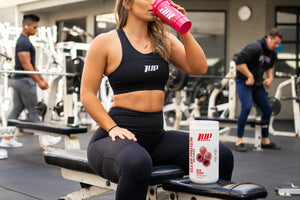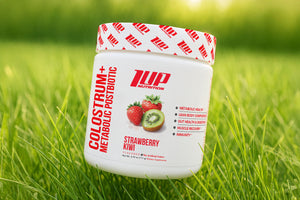The circulatory system includes the heart and blood vessels. The right side of your heart receives oxygen-depleted blood from your veins and pumps it to your lungs, where it picks up oxygen and gets rid of carbon dioxide. The left side of your heart receives oxygen-rich blood from your lungs and pumps it through your arteries to the rest of your body.
Poor circulation occurs when there is reduction in the transfer of blood, nutrients, oxygen, or lymph. It can occur as a result of many different factors and have numerous undesirable effects, negatively impacting performance, recovery, energy levels, and overall health.
Today we discuss the various causes of poor circulation as well as what things you can do, starting today, to support optimal circulation for better performance, recovery, and aging.
Signs & Symptoms of Poor Circulation
- Tingling/Numbness in extremities (fingers, toes, etc.)
- Coldness in extremities
- Fatigue/low energy
- Brain fog
- Muscle weakness
- Loss of appetite
- Brittle hair & nails
- Dry, cracked skin
- Weak immune system
- Varicose veins
- Low libido
What Causes Poor Circulation?
Poor circulation can be linked to a variety of health conditions and disorders. Two of the most well-known ones are atherosclerosis (thickening/hardening of the arteries) as well as peripheral artery disease.
Other notable contributors to the development and progression of poor circulation include:
Being Overweight/Obese
Carrying excess body weight is a well-known contributor to joint pain, inflammation, and a number of other diseases, including diabetes, high blood pressure, cardiovascular disease, and atherosclerosis.
Being overweight/obese forces extra pressure on the heart and lungs as well as compresses blood supply throughout the body.
Diabetes
Diabetes is known for high blood sugar levels, but poor circulation is another major consequence of the lifestyle disease. Tingling/numbness in the lower limbs as well as painful cramping in the feet and calves are prevalent among diabetics.
Blood Clots
Blood clots (a combination of platelets and proteins in your plasma) serve an important role in helping to heal a damaged blood vessel. However, clots can also form on the inside of vessels without an obvious injury (often as a result of various lifestyle choices -- smoking, obesity, etc.), and typically do not dissolve naturally. This reduces blood flow and presents serious health risks. The types of blood clots are among the most preventable causes of poor circulation.
Smoking
Smoking remains the leading cause of preventable disease and death in the United States, accounting for more than 480,000 deaths every year (~1 in 5 deaths).[1] Cigarette smoking is also known to be a major cause of cancer, and it also damages blood vessels.[1] Prolonged smoking leads to poor circulation, high blood pressure, and numerous other deleterious effects in the body.
Natural Ways to Support Healthy Blood Flow & Circulation
#1 Exercise
No surprise here -- exercise is essential. It benefits numerous aspects of daily living as well as long-term health, productivity, and quality of life.
Regular bouts of exercise (high-impact, low-impact, cardio, resistance training, etc.) all benefit cardiovascular health and combat poor circulation. In other words, any type of physical activity is helpful for promoting healthy blood flow. Pick your favorite forms of exercise (those which most entice you to show up and stay active) and get after it!
#2 Maintain a Healthy Body Weight
Building off of the previous exercise also plays a key role in combating weight gain and supporting healthy body weight. This prevents excess body fat accumulation thereby alleviating any undue stress on your joints, heart, lungs, and blood vessels.
#3 Don’t Smoke
There are no health benefits to smoking cigarettes. It is a known contributor to poor circulation, disease, dysfunction, and death. Quitting smoking is one of the best things you can do for your health, period!
#4 Moderate Alcohol
Drinking in moderation has been associated in research with cardiovascular health. However, excessive drinking is hazardous to your body on many levels. So, if you want to enjoy the occasional libation, please do. But, do so responsibly, and also realize that if you choose to abstain from alcohol, you’re not missing out on any “magical” benefits. Remember, alcohol is not an “essential” macronutrient.
#5 Hydrotherapy
Warm baths, jacuzzis (hot tubs), steam rooms, hot showers, and warm compresses are all forms of using warm water to enhance blood flow and support health circulation. Warm water encourages vasodilation (widening of blood vessels) which aids blood flow.
#6 Yoga/Meditation
Lifestyle stress is a major contributor to the development of inflammation, high blood pressure, and poor circulation. In addition to exercise, other less-intense physical endeavors can also benefit cardiovascular health and healthy circulation.
Two of the best are yoga and meditation, both of which have been found in research to reduce stress, increase feelings of relaxation, and support healthy blood pressure.[2,3]
#6 Dark Chocolate
Contrary to what you may have heard, chocolate and cocoa powder actually have several health benefits. The key is in choosing the right forms of cocoa/chocolate. Generally speaking, the darker the chocolate/cocoa, the better (this means you’re getting more of the “good” stuff and less sugar, fat, and other additives).
Cocoa (and as a result dark chocolate) contains various flavanols, polyphenols, and antioxidants that support healthy blood pressure and circulation as well as mood! We’re partial to “extra dark” chocolate (85-90%), but anything above 70% is perfectly fine as well.
#7 Matcha
Another “superfood” that has existed for thousands of years, Matcha is rich in antioxidants and catechins that support healthy blood flow as well as help boost metabolism and aid fat burning.
You can choose to drink a few cups of matcha each day. We offer top grade Organic Ceremonial Grade Matcha
#8 Turmeric/Curcumin
Turmeric is a culinary spice that has a long history of use, particularly in the cuisines of India and Southeast Asia. Curcumin is the primary bioactive present in turmeric, renowned for its brilliant yellow color.
In addition to enhancing the flavor and presentation of various foods, turmeric and curcumin preparations have also been rigorously investigated for its various benefits for joint health, inflammation, and healthy blood flow.
For these reasons, and more, we’ve included turmeric in both our daily wellness shot, Kickstart, as well as our top-rated Joint Health Plus formulas.
#9 L-Citrulline
L-Citrulline is an amino acid naturally found in watermelon that has been noted in numerous clinical studies to support nitric oxide (NO) production, blood flow and circulation as well as exercise performance.
We’ve included the full research-backed dose of Citrulline in every serving of our pre workouts, including 1UP Pre Women, 1UP Pre Men & 1UP Stim-Free Pre
#10 Nitrosigine
L-arginine is the amino acid that serves as the “fuel” for the body to produce nitric oxide. Because of this, it has long been believed that supplementing with L-arginine would increase nitric oxide levels; however, arginine supplements offer poor bioavailability, which means you need to take rather large doses of it (~10,000mg!) in order to obtain benefits. Unfortunately, large doses of arginine have also been found to lead to GI distress.
Nitrosigine, developed by Nutrition21, is an “enhanced” form of arginine that bonds it to silicon (a collagen-boosting ingredient) and inositol (a brain health nutrient). This unique complex offers several benefits, including improved absorption at SIGNIFICANTLY lower dosages all the while avoiding the GI upset of regular L-arginine.
Unlike many other name-brand supplements on the market, Nitrosigine is backed by numerous studies (not just 1 or 2) finding benefits regarding exercise, natural energy, and cardiovascular health.[4,5,6]
For these reasons, and many more, we’ve included the full 1,500mg dose of Nitrosigine (2x what most pre-workouts include!), in every serving of our pre workout supplements!
Takeaway
Poor circulation is something that (unfortunately) millions of individuals around the world have to deal with. The good news is that poor circulation can be improved upon with the right lifestyle choices.
If you’re looking to support healthy blood flow and circulation, try some of the suggestions outlined above and let us know what are some of your favorite ways to support cardiovascular health!
References
- https://www.cdc.gov/tobacco/data_statistics/fact_sheets/adult_data/cig_smoking/index.htm
- Khandekar JS, Vasavi VL, Singh VP, Samuel SR, Sudhan SG, Khandelwal B. Effect of Yoga on Blood Pressure in Prehypertension: A Systematic Review and Meta-Analysis. ScientificWorldJournal. 2021 Sep 13;2021:4039364. doi: 10.1155/2021/4039364. PMID: 34552393; PMCID: PMC8452415.
- Goldstein CM, Josephson R, Xie S, Hughes JW. Current perspectives on the use of meditation to reduce blood pressure. Int J Hypertens. 2012;2012:578397. doi: 10.1155/2012/578397. Epub 2012 Mar 5. PMID: 22518287; PMCID: PMC3303565.
- Sylla S, Ojalvo SP, Komorowski J. An evaluation of the effect of inositol-stabilized arginine silicate on heart rate and blood pressure. FASEB J. 2018;32:724.12.
- Rood-Ojalvo S, Sandler D, Veledar E, et al. The benefits of inositol-stabilized arginine silicate as a workout ingredient. J Int Soc Sports Nutr. 2015;12:P14. doi: 10.1186/1550-2783-12-S1-P14.
- Rogers JM, Gills J, Gray M. Acute effects of Nitrosigine® and citrulline malate on vasodilation in young adults. J Int Soc Sports Nutr. 2020 Feb 24;17(1):12. doi: 10.1186/s12970-020-00343-y. PMID: 32093766; PMCID: PMC7041093.






